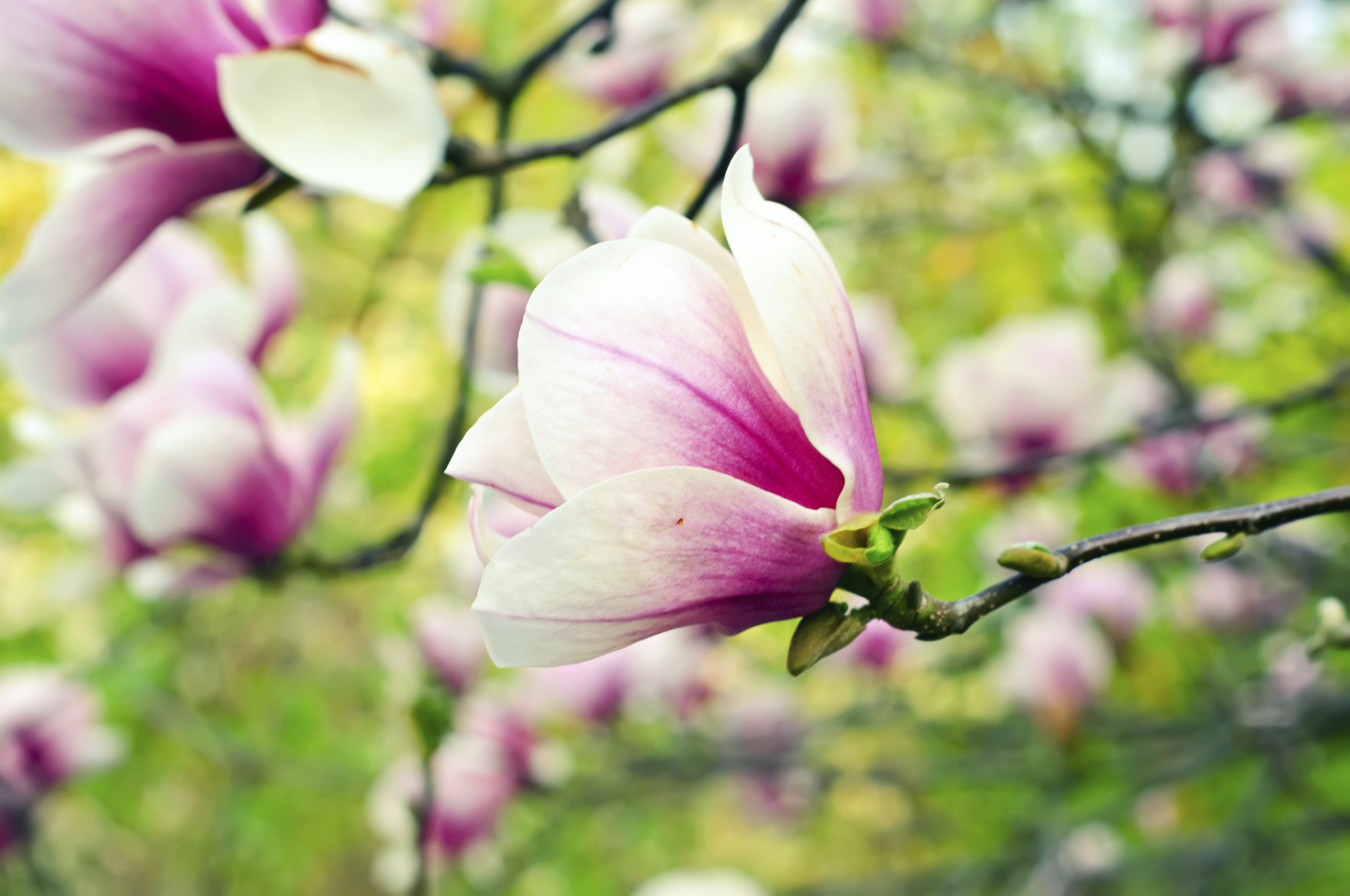
Its white, yellow, purple or pink blossoms add a delicate splash of colour to spring mornings, cheering us up amid any on-going winter gloom.
People have already started sharing photos of some of these flowering trees on social media, meaning even if I haven’t spotted one in person, I still get to enjoy them.
For the last five years, the arrival of spring in England has been marked by the flowering of Magnolias at The Great Gardens of Cornwall.
This month, spring arrived with the flowering of six champion Magnolia campbellii trees between Caerhays Castle Gardens, Trebah Garden, Tregothnan, Trewidden, Trewithen and The Lost Gardens of Heligan.
To mark the occasion, representatives from The Great Gardens presented a bouquet of Magnolias at Downing Street.
A family of deciduous or evergreen trees and shrubs, they often have showy flowers and are originally from Asia and North and Central America.
Grown since the 19th century, they’re traditionally considered to symbolise dignity and nobility.
They’re still a common feature of bridal bouquets.
If you fancy seeing a terrific specimen, check out Britain’s widest Magnolia campbellii, which grows in Lukesland Gardens in Dartmoor, Devon, and has a spread of around 100 feet, with large pink flowers.
Magnolias should be planted in full sun to achieve the best growth and flowering and will thrive in fertile, moist garden soil.
Some species can be grown in alkaline soils although most prefer acidic conditions.
Some later-flowering deciduous species can be grown in light shade.
Frosts can damage flowers in spring and evergreen foliage in autumn.
Also, Magnolias can be damaged by the wind, so will benefit from shelter and staking for support.
You may need to be patient with your newly-planted Magnolia as they can sometimes take several years to adjust to their new conditions and flower.
For more instantaneous colour, I plan to make use of the numerous self-sown wood forget-me-nots (Myosotis sylvatica) in my garden.
These tiny plants can be viewed as a weed, given their ability to pop up on any bare patch of soil.
However, I find their little bright blue flowers a welcome sight in the sometimes-limited palette of spring colour in my garden.
The plants have loose clusters of yellow-eyed, azure-blue flowers that appear from early spring above slightly-hairy, grey-green leaves.
A beautiful biennial, forget-me-nots are excellent for edging pathways or for under-planting spring flowering bulbs such as tulips or daffodils.
They thrive in sun or partial shade and can complement a mixed, herbaceous or wildflower border.
At this time of year, I tend to keep them to one side when I’m digging over last season’s veg patch or generally weeding.
Then, once I’ve collected all the forget-me-nots that had grown in the wrong place, I replant them together so that I can get the best out of their small flowers.
This allows me to have a solid block of light blue, making it easier to appreciate them.
I’ve often seen them used as a border around vegetable patches, adding some much-needed colour.
Several pollinators, such as bees, benefit from their flowers which bloom from April to June.
If you don’t have them growing in your garden, you can buy seeds from several suppliers.
However, you’ll have to wait until next year for them to flower.
Trust me, they’re worth the wait.
READ MORE
Start planning for an exciting growing year
‘Weird’ winter weather may result in fewer birds in British gardens

Enjoy the convenience of having The Sunday Post delivered as a digital ePaper straight to your smartphone, tablet or computer.
Subscribe for only £5.49 a month and enjoy all the benefits of the printed paper as a digital replica.
Subscribe